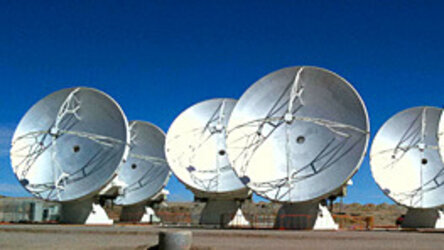Receiving method and receiver for satellite-based automatic identification systems
| 622 - Abstract: |
| Automatic Identification Systems (AIS) transmit in a time-shared mode in which communication packets from different sources avoid collisions by means of allocation of a unique time-slot within the area of interest. Such techniques are common in terrestrial AIS systems for ships but cause additional problems for satellite-based AIS systems, due to the much larger area covered by a satellite. The technology offered here improves the existing demodulation and signal processing methods. License agreements are sought. |
Description
AIS systems and similar low power digital communication systems prefer to use continuous phase modulation techniques (CPM) for their low spectral losses in comparison to other modulation techniques. Interfering CPM signals cannot be properly demodulated, so that time separation of data bursts from different sources is important. Satellite-based systems using CPM signals have a much larger packet collision risk than Earth-based systems, due to the much larger area covered by the satellite receiver, and due to significant time shifts of signals as a result of the motion of the satellite, causing significant Doppler shifts on the carrier waves. These effects can lead to significant loss of communication due to packet collisions, notably in heavy traffic.
The key aspect of the method offered here is to introduce a signal normalization step before the phase measurement step, which leads to much easier separation of colliding CPM signals, and therefore to reduced loss of communication in heavy traffic circumstances. The approach leads to minor performance loss under normal circumstances, without significant consequences, but leads to major reduction of signal loss under heavy traffic conditions.
The offer also refers to a receiver design with an effective forward coupling filter that improves efficiency of the further signal processing steps, exploiting favorable properties of the signal normalization pre-processing step. The improved efficiency of the receiver allows for leeway in terms of signal powers and/or packet rates, improving the capacity of existing systems without needing more powerful high-frequency hardware.
Innovations and advantages
The innovative aspects of the technology are:
- Algorithmic improvement in signal processing of Continuous Phase Modulated digital signals from multiple sources, reducing risk of packet loss in case of signals that overlap in time.
- Improved efficiency of further receiver processing algorithms thanks to the normalization step, thereby reducing the processing effort for the signal demodulation and allowing for increased capacity
- Design of a receiver architecture that takes advantage of the above processing technique, thereby allowing for increased capacity without requiring increased hardware capabilities or broadcast power
The practical advantages of this technology are:
- The error percentage (at the level of packets, or at the level of individual bits) is significantly reduced, allowing a larger number of AIS participants or other communication clients to be served by a single system
- The effects of Doppler shifts on the carrier wave as a result of the significant velocity of the satellite receiver are eliminated by means of frequency shifts during the signal normalization step
- The capacity of broadcast systems based on CPM techniques can be increased without requiring upgraded high-frequency hardware
Domain of application
The technology is very specific for time-shared, CPM modulated digital signals but may also have applications in areas other than AIS, such as road traffic management, airport logistics, and monitoring of groups of objects, animals or even people equipped with CPM signal generators for identification. There may be applications for mobile phones or similar widespread transmitters (remote controls, WiFi networks, indoor navigation infrastructures).















 Germany
Germany
 Austria
Austria
 Belgium
Belgium
 Denmark
Denmark
 Spain
Spain
 Estonia
Estonia
 Finland
Finland
 France
France
 Greece
Greece
 Hungary
Hungary
 Ireland
Ireland
 Italy
Italy
 Luxembourg
Luxembourg
 Norway
Norway
 The Netherlands
The Netherlands
 Poland
Poland
 Portugal
Portugal
 Czechia
Czechia
 Romania
Romania
 United Kingdom
United Kingdom
 Slovenia
Slovenia
 Sweden
Sweden
 Switzerland
Switzerland




























